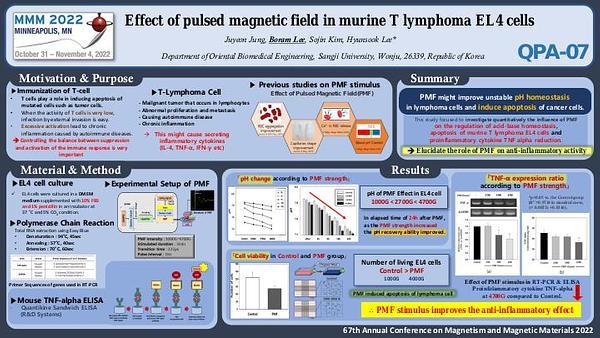Would you like to see your presentation here, made available to a global audience of researchers?
Add your own presentation or have us affordably record your next conference.
In this in vivo study, we have used Magnetic Pen or MagPen (see Fig. 1(a)) to stimulate the rat sciatic nerve which led to the report of the dosage response curve for
micromagnetic stimulation (μMS). As reported earlier 1, the MagPen prototype consists of sub-mm size microcoil (μcoil) at its tip (see Fig. 1(b)). When driven by alternating current, this
μcoil generates a time-varying magnetic field, which induces an electric field on any conductor (here, the sciatic nerve) according to Faraday’s Law of electromagnetic induction. This
induced electric field activates the nerve. This work reports how the directionality of the magnetic μcoil plays a direct role in activating nerves directly observed in hind limb muscle
twitches. These limb twitches have been quantitatively characterized using electromyography (EMG) recordings. Furthermore, we have studied how on varying the amplitude and
frequency of the micromagnetic stimuli, alters hind limb muscle movements. Thereby, a dosage response curve for μMS was generated. The highlight of this dosage response curve is that,
at higher frequencies, significantly smaller amplitudes of MagPen stimuli can trigger limb twitches. This frequency-dependent nerve activation can be explained directly from Faraday’s
Law as the magnitude of the induced electric field used in neuromodulation is proportional to frequency. In our previous work of in vitro μMS of rat hippocampal slices 1, we explained
the frequency-dependent, low-power activation of μMS through numerical simulations. This work further corroborates the same concept through experiments. Implantable μMS is a novel
neuromodulation technique which is still in its infancy and aims to address the potential drawbacks of electrical implants in terms of MRI compatibility and biofouling. Since the induced
electric fields from these magnetic μcoils are not in galvanic contact with the nerve, μMS offers flexibility in applying waveforms to drive these magnetic implants (see Fig. 1(c)).
Fig 1. (a) Different directionalities of the MagPen prototype. Only Type V can activate the sciatic nerve. (b) Size of the sub-mm size μcoil implant compared to a rice grain. (c) The
waveform that activated the nerve.
References:
1 Saha R., Faramarji S et al. (2022) Strength-frequency curve for micromagnetic neurostimulation (μMS) through EPSPs and numerical modeling. J. Neural Eng. 19 016018.

